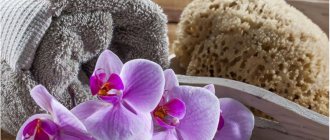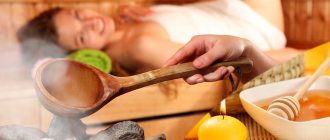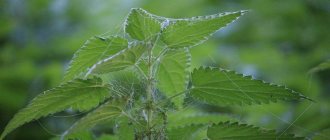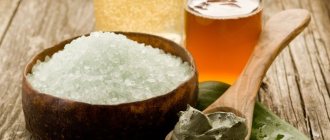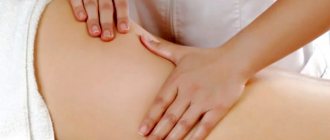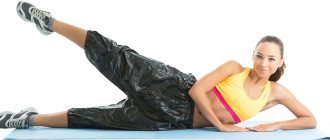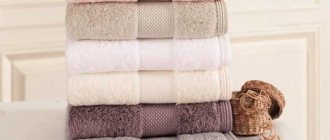A washcloth is a necessary attribute of personal hygiene. Just like a toothbrush, it should be individual for each family member. The effectiveness of hygiene procedures depends on it, so it is important to choose it correctly.
Then it will not only cleanse the skin of impurities. The right body washcloth will act as a massager, get rid of ingrown hairs or cellulite, and replace a scrub. And there is a wide choice - washcloths are made from natural or artificial materials, of different shapes, sizes, and hardness.
Body washcloth: benefits and harms
You have already made up your mind about the benefits and harms. It's up to you to draw conclusions. There are recommendations from doctors, research, and then there are your habits and preferences.
This does not mean that you should always follow traditions and not change anything. Perhaps, just after reading this article, you will decide to radically change your attitude towards washcloths and be more conscious of your body and health.
It is difficult to completely abandon this personal hygiene product, and probably not necessary. But it’s worth washing a washcloth, constantly changing it for a new one, and adding scrubbing products to your care.
We are used to using synthetic washcloths because they can be bought at the nearest store, and they dry much better than natural ones. But taking care of yourself at the beginning is always associated with some difficulties, and only then new habits replace old ones.
You need to listen to your body, yourself. Search and find what is best for you. At the same time, not paying attention to what advertising dictates. Don’t buy the first washcloth you come across because you liked the color, but think about the composition and quality. Then the daily habitual ritual of taking a shower will only bring benefits.
Synthetic bath sponge: types, pros and cons
Synthetic washcloths are, first of all, economical. Washcloths made of polyethylene or foam rubber are not as susceptible to the proliferation of microorganisms and various bacteria. You can find a wide variety of and quite original examples of washcloths not only for children, but for adults made from synthetic materials.
Types of washcloths made of synthetic materials:
1. Polyethylene sponges
Pros: This loofah is cheap, lathers easily, and is very compact.
Cons: rough for delicate skin, many find it inconvenient to use.
- Washcloths-towels
This type of washcloths began to be used back in the 60s in Japan. These washcloths are made of fabric, which consists of threads of various weaves. Pros: massage effect, you can choose the hardness of the washcloth, various additives in the washcloth. This washcloth can also be shaped into different shapes to wash any area of the body; it is possible to use medicinal herbs, antioxidants or minerals.
Cons: takes a long time to dry.
- Foam sponges
Pros: perfectly whips foam, low cost.
Cons: they take a very long time to dry, which increases the risk of proliferation of microorganisms and bacteria; they also often do not fully cope with their direct responsibilities - cleansing the skin of dead skin particles.
- Cellulose sponges
These are sponges very similar to foam sponges, but they differ slightly in their structure.
Pros: dries quickly.
Cons: before use, you must first soften it in water, and only then apply it to the skin.
- Polyethylene rose sponges
Pros: foams well, dries quickly. They are easy to use because they are small in size, but this is also a disadvantage of this washcloth.
Cons: small size.
In general, the world of personal hygiene accessories provides us with a great opportunity to have not just one or two washcloths at home, but a whole bunch, because taking care of your body is beauty and a great mood every day.
Which washcloth is better?
The answer is simple - synthetic:
- the risk of scratching your skin is minimal,
- STOP to various pathogenic microorganisms,
- a synthetic washcloth can please its owner with a bright color,
- you have the opportunity to choose a washcloth of the most bizarre shape, and therefore children will only be delighted with such hygiene items.
I hope these simple tips will help you choose the perfect washcloth that will take the best care of your body.
From loofah
A product from a plant called "crazy cucumber".
- Perfectly and deeply cleanses the skin.
- Has massage and exfoliating properties.
- Has an anti-cellulite effect.
- Accelerates the process of cell regeneration.
- It serves for a long time and has increased strength.
Flaws:
- Rough (not suitable for sensitive skin).
- Requires softening (usually it is simply soaked in hot water 15 minutes before the bath).
Natural washcloths
Washcloths made from plant materials not only perform the main function of caring for the human body, but also provide an additional healing effect. Typically the material used is:
- Bast is the subcortical layer of linden, subject to special steam treatment. Has medium abrasiveness. During use, it releases phytoncides that help treat diseases of the upper respiratory tract.
- Loofah (pictured) is the dried fibrous fruit of a plant in the gourd family. Provides a good skin massage.
- Sisal is a fiber made from agave leaves with a woven or knitted structure. Allows you to deeply cleanse the skin, providing excellent peeling and anti-cellulite effect. Increases blood circulation intensity.
- Rami. Thanks to their mesh structure, ramie washcloths help smooth the skin, cleanse pores and improve overall body tone. They also provide a good anti-cellulite effect, gently polishing without scratching the skin.
No less useful and in demand are natural washcloths made from bamboo, jute, rubber, volcanic pumice, and sea sponge.
One of the disadvantages of natural washcloths is their fragility. In the plant environment, pathogenic bacteria quickly multiply, and rotting processes are observed - regardless of the quality of sponge care (heat treatment, washing).
Made from sisal
Many people have heard about the fiber obtained from agave leaves. As a rule, such washcloths are cute woven mittens.
Among the advantages are:
- Pronounced anti-cellulite effect.
- Peeling properties and acceleration of blood circulation.
- Long service life.
There are many more disadvantages:
- Increased rigidity (too rough washcloth). It is not recommended to use it more than twice a week. And for people with an abundance of moles and sensitive skin, it is better to abandon it altogether in favor of a softer washcloth.
- Low foaming.
- Requires soaking in hot water.
- High price.
Synthetics and organics: the eternal struggle
Bath sponges, in theory, should consist only of fibers from natural raw materials, because the bath, as we never tire of repeating, is a stronghold of everything real and environmentally friendly. But what to do when modern science, followed by industry, throws more and more new types of synthetic products onto the market, and sellers vying with each other to praise the new products, tempting the consumer with hitherto unprecedented innovations. Let's evaluate such products with passion, maybe we'll find something?
Synthetic washcloths: do they have a place on the bath shelf?
Many adherents of industrial theory firmly believe that chemists do not eat bread in vain. And if there is such a fundamental thing for a real Russian bath as synthetic vodka, then a synthetic washcloth is such a trifle that it’s not even worth mentioning, it’s already a given. What types of them can we find on store shelves and market stalls:
- Foam sponges. They have a very delicate, soft texture, perfectly absorb detergents and generate foam. They have a wide variety of shapes, colors and porosity of the massif. However, a delicate surface requires no less delicate handling. Excessive efforts cause increased wear of such a bath sponge, and excessive softness of the surface does not always contribute to high-quality cleansing of the skin surface. Children's washcloths made of foam rubber are very popular. At the same time, it is necessary to thoroughly dry such products after use, otherwise they are prone to souring due to good moisture retention.
- Polyethylene washcloths. They are long products woven from polyethylene fiber with handles - for comfortable back washing. Due to their more developed contact surface, they have better cleansing properties, however, they can cause irritation of delicate and sensitive skin. A high-quality washcloth should have a uniform and uniform surface, but inexpensive products, unfortunately, cannot boast of such properties.
- Washcloths are roses made of nylon or nylon thread. A real find for a bathhouse, which is very difficult and takes a long time to ventilate. Due to the amorphous and inert nature of the material with a very low coefficient of water absorption, they dry very quickly and efficiently. Compact, lightweight, easily restores its original shape after deformation. However, if you protect them from contact with very hot objects, the thread is destroyed due to lightning-fast melting. Frankly cheap products made by Chinese “masters” are prone to loss of shape due to breaks in the connecting, so-called “load-bearing” frame threads.
- Washcloths towels made of polyester fabric. They entered the market in the late 1950s thanks to the growing power of Japanese industry. Due to the weaving pattern and diameter of the thread, their rigidity can vary widely and, as a result, a massage effect is present to one degree or another. Branded products are durable and practical to use, but are quite expensive to purchase.
Connoisseurs, experts and other analysts like to talk at length about the dangers of synthetic fibers, citing as an argument the increased allergenicity of the material, dyes and the ability of synthetic fibers, in conditions of elevated temperature and humidity, to release harmful substances into the indoor atmosphere. Undoubtedly, these arguments cannot be denied, however, a categorical statement about the dangers of a particular product can only be done with comprehensive data from an in-depth comprehensive examination.
Products made from natural fibers: expensive and comfortable
For several millennia, nature has been gifting humanity with washcloths made from natural raw materials; let’s remember the main ones:
- Woven washcloths made of flax fiber. They are distinguished by the absence of allergenic properties, work delicately on the skin of various sensitivities, combine a cleansing effect with a massage effect, absorb moisture well and generate foam. Unlike many organic products in this segment, they are quite durable. Among the disadvantages, it is worth noting the relatively high price and the need for good and deep drying under natural ventilation;
- Loofah sponge. We dedicated a separate story to this extraordinary product. Today we will outline the key points. The loofah is durable, quite easy to care for, has a good quality of cleaning the epidermis from keratinized particles, the massage effect is combined with the properties of improving blood microcirculation with lymph outflow, which has earned the “mad cucumber” loofah the fame of an anti-cellulite product. From the advantages come the disadvantages. For people with sensitive skin, such a bath sponge requires preliminary preparation, which usually boils down to steaming in hot water for 15 - 20 minutes. A steamed product works more delicately and predictably;
- "Mexican loofah" made from agave leaves. The era of globalization is bearing its positive fruits and now we know that Mexico produces not only heart-stopping series for elderly housewives, but also produces such an extraordinary product as a washcloth mitten. It has a powerful peeling effect and warms up the skin well. It is quite suitable for lovers of a hard sauna with high temperatures on the top shelf and an ice hole. The washcloth glove is very durable, as well as far from cheap. In any case, it requires pre-soaking, although this technique makes its surface softer, its ability to form foam remains far from sufficient. People with problem skin, acne, and a large number of moles should definitely avoid using it;
- Bast washcloth. Linden, in addition to honey, tea, lining and brooms, also supplies strong bathhouses with bast made of soft, but quite strong fibers that lie under the bark of a mature tree. This bath sponge has a very balanced stiffness. That is, the fiber structure has a developed texture for high-quality cleaning of the skin and providing a massage effect, on the other hand, the bast is quite soft and does not have a serious mechanical effect on human skin. Even a dry bast washcloth can be softened by soaking it for 10 - 12 minutes in moderately hot water. A serious disadvantage of such products should be considered the excessive fragility of the fibers in the cross section, which rapidly progresses with each subsequent drying. In Rus', bast was always in abundance, so such sponges had a very short life cycle. The family washed themselves in the bathhouse - the washcloth went on the bedding in the hen house;
- Bathcloths made from Chinese nettle. The product has a pronounced cellular structure with moderate surface hardness, as a result of which both the cleansing effect and the massaging effect harmoniously complement each other. Types of washcloths made from domestic raw materials of this kind are a thing of the past. And they were made from processed stems of nettle or hemp. It is quite obvious that hemp is cultivated as an industrial crop, but making washcloths from it today is a rather low-tech process;
- A birch bark sponge, which, like nothing else, confirms the well-known rule: “everything new is well-forgotten old.” Birch bark, due to the presence of phytoncides, locally suppresses the development of pathogenic microflora, helps fight acne, massages the skin well, improves blood microcirculation, has an anti-cellulite effect, opens pores and removes particles of keratinized epidermis. Naturally, only a washcloth manufactured according to technology requirements and in accordance with high production standards and responsibility to the end consumer can have the listed qualities. And for our manufacturers, with regard to the listed requirements, the situation is not very rosy, with rare but pleasant exceptions;
Above are the main products, the raw materials for which are supplied by the plant world, but do not forget about the animal world. As a rule, the raw materials from which these types of washcloths are made are bristles and sea sponges. Let's look at them in more detail:
- A hard bristle washcloth has been well known to users since Soviet times. The wooden base with a long handle made it possible to operate the instruments within a fairly wide range. People who were obese or overweight especially liked this feature - they did not have to bend over, and in general, a minimum of effort was required from the user when performing procedures. Unlike products made from plant materials, washcloths with bristles lasted longer, the bristles did not get too wet and did not absorb moisture, however, they were noticeably stiffer and not so comfortable to use. Now such products can be found on sale, however, their popularity is not too high;
- Sponge washcloths, unlike the previous type, are much more delicate, soft and comfortable to use. Often these qualities predetermine their popularity in the form of children's hygiene products. There is practically no alternative to it as a face washcloth. The main disadvantages include: short period of use, the need to soak before use, high cost and limited selection on the domestic market.
Attention! The question of whether it is possible to rub your face with a washcloth can be answered unequivocally after consultation with a cosmetologist. In any case, the most delicate areas around the eyes and lips require a special approach.
Foam rubber, luffa, sisal
What materials are washcloths made from and what distinguishes them from each other?
Luffa is a tropical vine of the Cucurbitaceae family. A washcloth made from its fruits has a relatively mild exfoliating and massage effect; you can wash with it every day. After purchasing such a washcloth, you need to steam it in boiling water for about 15 minutes, then it will become softer.
Sisal is a fiber from the leaves of the Mexican agave plant, a very tough material. Washcloths made from it perfectly massage the skin, improve blood and lymph circulation, “awakening” the body. However, you cannot use it more than 1-2 times a week. Sisal fibers fray very quickly, so this type of washcloth will not last long.
Ramie (Asian nettle), on the other hand, is a very strong fiber that is resistant to twisting, stretching, tearing, and rotting. Excellent washcloths in the form of mittens and long strips are made from it. Ramie washcloths knitted in stocking stitch are softer, while bouclé ones are stiffer. Both of them cope well with all their responsibilities.
Bast (linden, birch) is the inner layer of the bark of a young tree. Bast washcloths (linden - softer, birch - harder) are suitable for daily use. New, they have an antibacterial effect, since bast contains a lot of phytoncides that are released during the washing process. Their main drawback is that they become unusable very quickly.
Foamed cellulose (viscose) is a relatively soft material. Washcloths made from it are recommended for people with problematic and sensitive skin; they have a mild exfoliating effect and are great for daily use. In addition, they foam detergent well and absorb large amounts of water.
Natural sea sponge is at least an order of magnitude more expensive than artificial ones. For the body, there is little point in buying it, and given its fragility, such a purchase will simply be an empty transfer of funds. But the sea sponge is good as a sponge for facial care.
Foam rubber is not the best choice. This type of washcloth holds water well and foams soap, but it won’t really scrub the skin “squeaky clean.”
Polypropylene. The most common are handicraft braids, knitted from thin polypropylene ribbons. They are quite tough, good for soapy anti-cellulite massage of the thighs and buttocks, but it is better not to scrub more delicate skin with them.
Nylon. This material is abrasion-resistant, elastic, pleasant to the body, and exfoliates dead skin particles well. Washcloths made from it foam well for shower gel or soap.
Loofah, also a massager, scrub and anti-cellulite product
If you don't like to wash with a washcloth and prefer to apply shower gel or soap to your body with your hands, no one will call you dirty. Wash for your health. But first, look at what useful bonuses you are depriving yourself of.
Benefits of washing with a loofah:
. Friction with a washcloth warms up and further relaxes the muscles, accelerates lymph flow and blood flow. With regular use of a washcloth or massage brush, the skin on the abdomen, thighs and buttocks will become noticeably tighter and firmer.
Exfoliation of dead cells
. You will definitely cleanse your body by simply washing it with soap or shower gel. However, a washcloth helps remove the upper invisible layer of dead cells: as a result, metabolic processes are stimulated, pores open, and the skin begins to breathe.
. This point is especially relevant for women. Friction with a washcloth helps prevent such unpleasant phenomena as ingrown hairs after epilation and shaving, as well as irritation and pustules in the areas of ingrown hairs.
. Not the most obvious point, but it’s impossible not to mention it. Using a washcloth, a small drop of shower gel turns into a cloud of thick foam that can easily be used to wash your entire body. While the same drop of gel on the palm is hardly enough for one leg.
From the bast
This bathhouse “masterpiece of naturalism” is made from the subcortical linden layer. It is generally accepted that such a washcloth is the most beneficial for the skin of all existing natural ones.
Pros:
- Deep cleansing of pores.
- Destruction of microbes (note - the release of phytoncides during the washing process).
- Exfoliating pronounced effect.
- Low cost.
- Medium hardness and softening in water.
Flaws:
- Short lifespan (the washcloth begins to crumble).
Sea sponges
Very soft, delicate and pleasant to the body - with a porous soft structure. They foam well and do not cause skin irritation or allergies.
They can be easily used on baby skin or to cleanse delicate facial skin.
But there are also disadvantages:
- Very short life span.
- Very high cost.
- Hardens after drying.
- Requires replacement every 2-3 months.
Of course, these are not all washcloths. There are also examples for hamam, eco-scrubbers made of cellulose, and so on. The variety is great, and the choice is limited only by wishes and wallet size.
Dry massage brush
It can not only replace the usual washcloth, but also significantly improve the quality of the skin. Some people use a brush for self-massage in the shower, others without using water.
If we talk specifically about replacing a washcloth with this brush, then there is a simple ritual:
- Steam your body under hot water
- Apply soap or gel to the body
- Use the brush on each leg first. From bottom to top, applying a little force, but without causing discomfort to the skin. Especially “work out” the hips and buttocks. This improves blood circulation and removes excess fluid from the body. Some people even manage to get rid of cellulite this way.
- Then move on to your hands. Also from the hands to the shoulders, from bottom to top.
You can and should use a brush for self-massage constantly, two to four times a week. It costs approximately 1,000 rubles. It is made from different materials, but it is better to buy one with natural bristles and a wooden handle.
Rules for using a washcloth for washing and caring for the body
Even children know that a washcloth, like a comb or toothbrush, is unique to each person. And, of course, the rules of care apply to it to the same extent as to other personal items.
- We change the washcloth every 2-5 months, in accordance with the material. The artificial one can be changed less often, the natural one can be changed regularly!
- After the washing procedure, be sure to thoroughly rinse the washcloth and dry it equally thoroughly.
- 1-2 times a week we treat the washcloth with antiseptic agents or soak it in boiling water, if the material allows. You can use a solution of boiling water and vinegar.
- We keep washcloths away from the sun and batteries (we extend their service life).
- We don’t use hard washcloths every day! The scrubbing effect can become a real headache if you use them more than once a week. Like scrub masks, these washcloths are recommended to be used 4-5 times a month so as not to cause irritation and inflammation of the skin.
- Do not twist the washcloths when spinning (they will lose their shape and appearance)!
- If the material allows, once a week you can wash the washcloth in the washing machine with other things.
Question answer
What is the best washcloth to use for washing a small child over the age of one year? It is best to use soft sponges or “roses” made of nylon fibers. Such products provide good foam and do not scratch the baby’s delicate skin. If traces of mold appear on a washcloth, what can be done in this situation and why did this happen? Mold usually forms on natural washcloths that are not dried after use. It is no longer safe to crumple such a product. It is best to immediately discard the washcloth and buy a new one. How to properly store a washcloth after use? You can store a washcloth in a bathhouse, dressing room or at home. The most important thing is that the product must be suspended so that water can drain from it. If possible, it is best to dry the washcloth immediately after use in a well-ventilated area. Which washcloth should you use if you have a lot of pimples and acne on your body? In this case, it is best to completely abandon the washcloth for a while. In extreme cases, you can use a soft and gentle sponge. Is it possible to wash a washcloth in a washing machine with other things? Yes, you can. However, you should select the appropriate washing mode. This is one of the most effective ways to care for your product.
The best natural body washcloths
Bath accessories made from natural materials are recommended for treating problem areas. A loofah or viscose washcloth is good for washing your back. A product made from bast or nettle will help massage areas with cellulite. A sisal mitten is suitable for the feet and elbows. Sea sponge is used daily for different areas.
Butterfly, viscose mitten
The miracle washcloth will make your skin clean, smooth and silky after the first wash. The shape of the accessory resembles a traditional mitten measuring 20x13 cm. There are slots for the thumb on both sides, so the mitten can be worn on both the right and left hand.
The washcloth material is viscose of varying degrees of hardness. The black side (“hard”) is rougher and scrubs effectively, the orange side (“soft”) is soft and gentle, suitable for the face and daily washing. You can use it while taking a shower or after it while the skin is damp. The miracle washcloth improves blood circulation, stimulates cell renewal, exfoliates well, and is more effective than a scrub.
Price:
- 430 rub.
Advantages:
- fights the problem of ingrown hairs;
- does not prick, does not injure the skin;
- does not tear;
- strong holding elastic band;
- booklets with information about the properties of the product.
Flaws:
- produces little foam.
PROFFI PS0363 sisal
An excellent back washcloth will help get rid of rashes quickly. After the massage, muscles relax and fatigue goes away. Over time, cellulite disappears, the skin becomes firmer and tighter. It is recommended to use a sisal washcloth 1-2 times a week with or without soap. For the best anti-cellulite effect, apply fat-burning cream after the procedure. Coarse fiber is not recommended for people with thin sensitive skin or a large number of moles.
Price:
- 200 rub.
Advantages:
- convenient sizes - 45x10 cm;
- without smell;
- long handles - comfortable for fat, tall people;
- does not scratch the skin;
- does not cause allergies;
- retains its original appearance.
Flaws:
- takes a long time to dry;
- not for thin sensitive skin;
- fragile handles.
Art de lis, nettle
Natural washcloth for baths and showers with thin but durable fibers. Nettle massages, tones, and cleanses the skin well. The fibers are coarse, but do not damage the skin. Thanks to the durable handles, the washcloth is comfortable and pleasant to hold in your hands. To make the product softer, it is recommended to keep it in hot water for several minutes.
Price:
- 200 rub.
Advantages:
- long canvas - 46x10 cm;
- for any skin type;
- does not cause allergic reactions;
- fights cellulite;
- peeling and scrubbing effect without additional products;
- the fibers don't come out.
Flaws:
- The detergent does not foam well.
Eva, linen
The washcloth is suitable for gentle cleansing of sensitive skin. Flax fibers massage and tone well. The bristles are very soft, pleasant to the touch, and do not scratch the skin. The washcloth itself measures 45x10 cm, and the long handles will help you carefully work out hard-to-reach places - the back, buttocks.
Price:
- 230 rub.
Advantages:
- suitable for daily use;
- Gently massages dry, problematic skin;
- strong, thin fibers;
- does not cause allergies.
Flaws:
- handles are too thin;
- forms little foam;
- takes a long time to dry.
Fine Silk sea sponge
Natural sponges are designed for deep and safe cleansing of the face and body. The sponges are supplied in hermetically sealed double cellophane. They get wet quickly, increase slightly in size, and become very soft and pleasant to the touch. Thick and abundant foam is formed from just one drop of gel/soap. A small sponge is convenient for washing your face.
The sponge is porous and has a heterogeneous structure; it washes well with soap and water and dries quickly. To ensure it lasts a long time, do not wash it in very hot water, do not twist it (you can squeeze it slightly), and do not dry it in the sun.
Price:
- 200 rub.
Advantages:
- different sizes - 1.5-2 and 3-5 inches;
- cleanses delicately and carefully;
- removes makeup, masks, creams;
- exfoliates;
- suitable for dry, sensitive, problem skin;
- can be used every day;
- after use, foundations apply more evenly;
- service life up to 2 years.
Flaws:
- The face sponge is too small.
- Signs of teething in babies
- Barley in a slow cooker: porridge recipes with photos
- Cookies with sour cream: delicious pastries
Spivak, dry massage brush
The product is made of safe materials - wood and boar hair. The brush is very hard, ideal for anti-cellulite procedures. Thanks to its size (38x7 cm), it massages hard-to-reach places well - the back, the back of the thighs. Can be used with dry scrubs from Spivak. As a result of regular use, blood circulation, lymph circulation improves, metabolism accelerates, and cells are renewed. The skin gradually becomes smooth, firm and elastic.
Price:
- 450 rub.
Advantages:
- hard bristles;
- the bristles do not fall out;
- foams well;
- massages strongly;
- pleasant relaxing effect;
- relieves muscle pain;
- comfortable long handle;
- the tree has no covering;
- There is a hole and a loop for hanging.
Flaws:
- No.
Criterias of choice
Having figured out how, it turns out, to use such a familiar object correctly, let’s move on to the main selection criteria.
Material
A bathroom accessory can be of natural or artificial origin. Each type has its pros and cons.
Natural
| Advantages | Flaws |
| Hypoallergenic. The exception is the sea sponge. It contains iodine, which can cause severe irritation to the skin. | They take a long time to dry. |
| Safe for the environment. They rot quickly and, unlike synthetic analogues, do not require processing. | They are short-lived and quickly deteriorate. |
| There are different degrees of hardness: from soft, giving only foam, to scrubbing and anti-cellulite. | |
| Suitable for massage. | |
| Lets air through. | |
| At high temperatures they do not emit toxic substances. |
Let's look at the most common materials on the market for creating a washcloth.
- Hemp
These are fibers from the stems of industrial hemp. Durable, rough to the touch.
| pros | Minuses |
| It lasts a long time. | Very hard, can leave scratches on the skin. |
| Foams well. | |
| Resistant to water, even salty. | |
| Suitable for lymphatic drainage massage. | |
| It tightens the skin well, making it elastic. | |
| Helps get rid of cellulite. |
- Loofah
A product made from the dried fruits of a plant called “mad cucumber”.
| pros | Minuses |
| Durable. | Before bathing, soak for 15-20 minutes in hot water. |
| Durable. | Rude. |
| Provides high-quality, deep cleansing of the skin. | Not suitable for children, as well as those with problematic or delicate, sensitive skin. |
| Helps fight orange peel. | |
| Pronounced lymphatic drainage effect. |
- Lyko
The washcloth is knitted only from young, thin and very soft linden bark.
| pros | Minuses |
| Suitable for children. | It takes a long time to dry. |
| Does not harm sensitive skin. | It quickly falls apart into small pieces and can clog the drain. It is better to use in a bath. |
| Natural antiseptic. | Sold in few places. |
| Anti-acne effect. | Doesn't foam well. |
| Heals wounds. | Rarely found. |
- Birch bark
Similar to the bast version, birch is made from young, soft parts of birch bark.
| pros | Minuses |
| Durable, moisture resistant. | Price. |
| Pleasant aroma. | Rarely goes on sale. |
| Suitable for children. | |
| Does not harm sensitive skin. | |
| Durable. | |
| Has antiseptic and anti-inflammatory properties. | |
| Has a massage effect. | |
| Deeply cleanses pores and successfully eliminates acne. | |
| Helps in the fight against orange peel. |
- Linen
Strong tapes, gloves or mittens made of linen fabric rid the body of small irregularities and peeling, making the skin silky and soft.
| pros | Minuses |
| It lasts a long time. | No. |
| Durable material. | |
| Gives abundant foam. | |
| Absorbs water well. | |
| Does not cause allergies. | |
| Soft scrubbing effect. | |
| Light massage function. | |
| Stimulates blood microcirculation. |
- Sisal
These super-stiff washcloths (usually gloves or mittens) are woven from the strong fibers of agave leaves.
| pros | Minuses |
| Durable. | Produces little foam. |
| Tones and tightens the skin. | It needs to be soaked in boiling water for a long time. |
| Relieves swelling. | |
| Helps against orange peel. |
- sea sponge
Tender, delicate and pleasant sponges are made from marine animals of the Spongia officinalis, Hippospongia communis families.
| pros | Minuses |
| Suitable for children. | They quickly become unusable. |
| Soft. | They are expensive. |
| Forms abundant foam. | Hardens after drying. |
| Suitable for sensitive, problem skin. | |
| Antibacterial effect. |
Synthetic
These washcloths are made from a variety of materials - foam rubber, polyester, rubber, polyethylene threads, as well as other artificial materials. There are various shapes, textures, hardness and colors.
We list the main advantages and disadvantages of synthetic washcloths.
| pros | Minuses |
| Suitable for children. | They quickly become unusable. |
| Soft. | They are expensive. |
| Forms abundant foam. | Hardens after drying. |
| Suitable for sensitive, problem skin. | |
| Antibacterial effect. |
Now let's look at the characteristics of the most common types of synthetic washcloths.
- Foam sponge
One of the most popular bathroom accessories that can be found in any supermarket.
| pros | Minuses |
| Variety of shapes, colors, sizes. | They quickly deteriorate, crumble, tear. |
| There are specimens of any hardness. | They take a long time to dry. |
| Gives abundant foam. | Bright, flashy sponges painted with low-quality dyes can cause allergies. |
| There are combined options - one side is hard, the other is soft. |
- Rose sponges
Cute polyethylene flowers have earned their popularity for both their attractive appearance and functionality.
| pros | Minuses |
| Inexpensive. | They easily lose their original shape - they unwind and tear. |
| Lungs. | They don't scrub. |
| They take up little space and can be taken on trips. | They don't massage. |
| They foam well. | |
| Dries quickly. | |
| Do not injure the skin. |
- Washcloths-towels
Invented in the 60s of the 20th century in Japan, they gained wide popularity throughout the world. The product is a wide towel made of durable nylon threads. Now Japanese towels are sold both on online platforms and in regular stores like FixPrice.
| pros | Minuses |
| Comfortable. | Beginners may find it awkward at first. |
| There is an opportunity to choose according to your skin type - there are both hard and soft. | |
| Durable. | |
| Durable. | |
| Soft peeling effect. | |
| Light massage effect. | |
| They have special additives in the composition for gommage. |
- Polyethylene scouring tapes
An extreme peeling option for normal skin, but excellent for rough skin.
| pros | Minuses |
| Convenient shape. They often come with handles or laces. | They are rarely of high quality and tear quickly. |
| Rough. |
Rigidity
According to the degree of rigidity, all products are divided into five types:
- Soft;
- Average;
- Hard;
- Super hard;
- Combined.
Firmness depends on your skin type. If you are not sure about the choice, take a soft or combined option. This way you are less likely to injure your skin.
Shape, color
The color of the washcloth and its shape are also important when bathing.
For example, bright, cheerful sponges in the shape of animals are perfect for washing those kids who do not like or are afraid to bathe. A soft washcloth-mitten made of flannel or terry cloth will speed up the washing of children up to one year old.
Size matters and depends on what parts of the body you want to wash. And also your habits and health. Small models are good for local hygiene and massage procedures. For example, a small sponge is enough to cleanse or scrub your face. Anti-cellulite sponges are also usually small and easily fit into the palm of your hand.
On the contrary, large models in the form of ribbons, towels, and braids allow you to quickly wash all parts of the body without showing miracles of flexibility and without the risk of slipping. This feature makes these washcloths convenient for elderly or limited mobility people.
All kinds of loops, laces, and handles significantly increase the ergonomics of the product - it will not slip out of your hands or get lost under water, and you do not need to bend over to get it. In addition, a washcloth suspended by a loop dries faster.
And, of course, it is recommended to have several washcloths for different purposes:
- For every day - a soft sea or synthetic sponge.
- For convenient back washing, use a loofah washcloth or a long-handled brush.
- To combat cellulite and have a massage effect, use a hard washcloth. For example, from bast or ramie.
- For feet and elbows - a sisal washcloth.
How to take a contrast shower for weight loss correctly?
The site Colady.ru thanks you for your attention to the article! We will be very pleased if you share your opinion and reviews about the washcloths you like!
Bars, flowers, mittens...
The color and shape of the washcloth is largely a matter of taste. The most important thing is that it is comfortable to hold.
It is convenient when the washcloth has long loops or handles that you can grab onto. Instead of a hard washcloth, you can use a natural or soft synthetic bristle brush with a long handle. It is good for hard to reach places. With the help of such a brush you get an excellent anti-cellulite massage of the thighs and buttocks.
Bright foam washcloths in the shape of various animals are impractical for washing, but they are good for those kids who do not like to bathe: with toy washcloths it is easier to survive the dressing down from their parents. And in the first year it is better to wash children with a washcloth-mitten - flannelette or terry.

